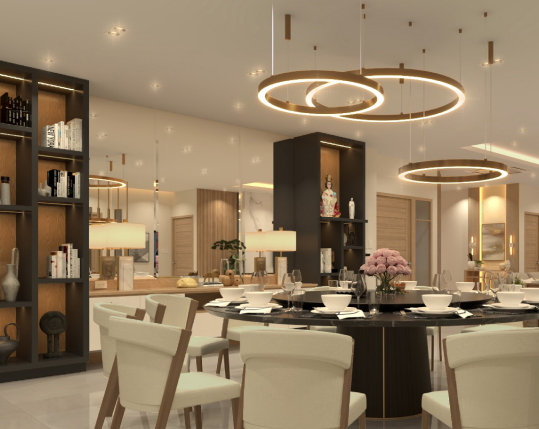Incorporating Sustainable Practices in Interior Design
Sustainable practices in interior design help in creating eco-friendly spaces that promote a healthier lifestyle and reduce ecological impact. Embracing sustainable design supports the planet by minimizing waste and conserving resources while also improving indoor air quality and overall well-being. As demand for green living increases, integrating these practices is essential for designers looking to meet the needs of eco-conscious clients and create a better future.
This blog explores the importance of sustainability in interior design, emphasizing how eco-friendly materials, energy-efficient lighting, and sustainable furniture can enhance both aesthetics and environmental conservation.
Green Design vs Sustainable Design
Green and sustainable designs are often used interchangeably but have distinct differences. Green design focuses on reducing the negative impact of construction and building processes by using eco-friendly materials and energy-efficient systems. However, sustainable design goes beyond just incorporating green elements; it aims to create spaces that positively impact the environment, economy, and society.
Sustainable interior design considers the materials used and their entire lifecycle. Every aspect is evaluated for its environmental impact, from production and transportation to maintenance and disposal. It also considers social responsibility, fair trade practices, and ethical sourcing of materials.
How to Make Interior Design More Sustainable
Creating a more sustainable interior design requires a thoughtful approach that prioritizes eco-friendly practices and materials throughout the design process.
- Design for Longevity: Prioritize timeless design elements and high-quality, durable materials that withstand the test of time. This approach reduces the need for frequent replacements, thereby conserving resources and minimizing waste.
- Reduce Waste: Incorporate practices such as upcycling and repurposing old furniture to give items a new lease on life. Additionally, choosing recyclable or biodegradable materials helps reduce the overall waste generated from interior design projects.
- Design for Energy Efficiency: Optimize your space by incorporating energy-efficient appliances and fixtures and focusing on maximizing natural light in your home. This will reduce energy consumption, lower utility bills, and enhance well-being through improved natural lighting. Additionally, you may incorporate energy-efficient appliances, LED lighting, and smart home technologies. Designing for optimal daylighting can further enhance efficiency by reducing the need for artificial lighting during the day.
- Use Non-Toxic and Non-Polluting Products: Select paints, finishes, and building materials free from harmful chemicals and pollutants. Products with low VOC (volatile organic compounds) emissions can ensure better indoor air quality and create a healthier living environment.
- Conserve Water: Install low-flow faucets, showerheads, and dual-flush toilets to minimize water usage without sacrificing performance. Additionally, consider using drought-resistant landscaping and rainwater harvesting systems to conserve water resources further. You can also implement greywater recycling systems to reuse water from sinks, showers, and laundry for irrigation and other non-potable uses. This practice can drastically reduce the freshwater required for household activities, conserving this precious resource.
- Use Eco-friendly Materials: Choose materials such as reclaimed wood, bamboo, and recycled metal with lower environmental footprints and promote sustainability. These materials conserve natural resources and add unique character to the design.
Conclusion
Sustainable interior design is not just a trend but a crucial step towards creating a more environmentally friendly and healthier world. By implementing sustainable practices, we can reduce the negative impact of our living spaces on the planet while enjoying beautiful and functional designs. Whether you’re exploring sustainable options for your condo interior design or other living spaces, prioritizing eco-friendly choices can make a significant difference. With an increasing global focus on sustainability, it’s essential to prioritize responsible design choices in our homes and workspaces. If you are looking for the best interior designer in the Philippines, consider Rock Robins Design for a professional approach to sustainable and stunning design. Contact us today!
About the Author
Rock Robins
Principal Designer of Rock Robins Design Studio Co
Rock Robins is one of the most sought-after interior designers in the Philippines. He has earned a reputation for creating captivating contemporary condominium designs and modern styles for both residential and commercial projects.
Rock’s exceptional showpieces have been prominently featured in numerous esteemed home design and furnishing magazines, including Metro Home and Entertaining. Additionally, his stunning interior designs are frequently showcased in the renowned MyHome Magazine.







